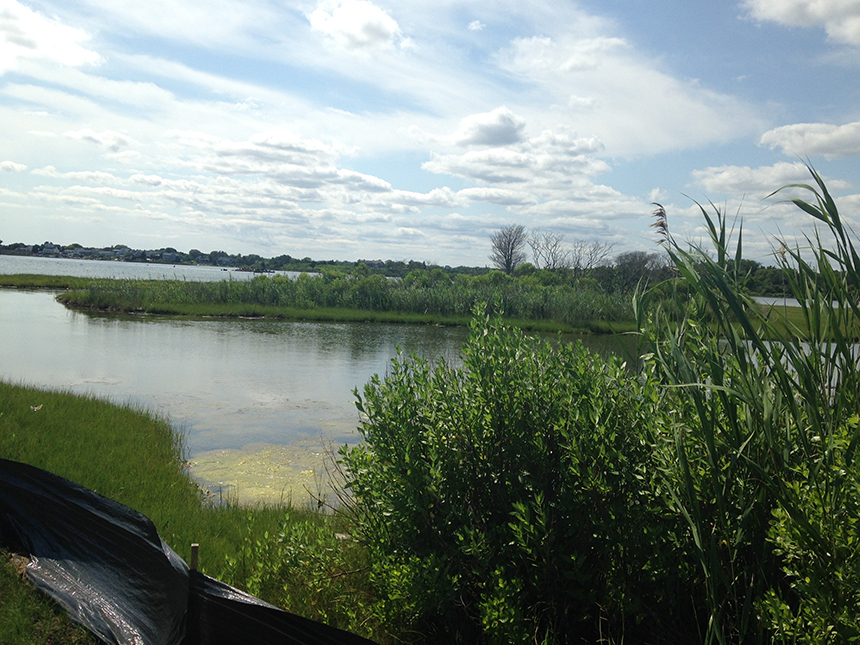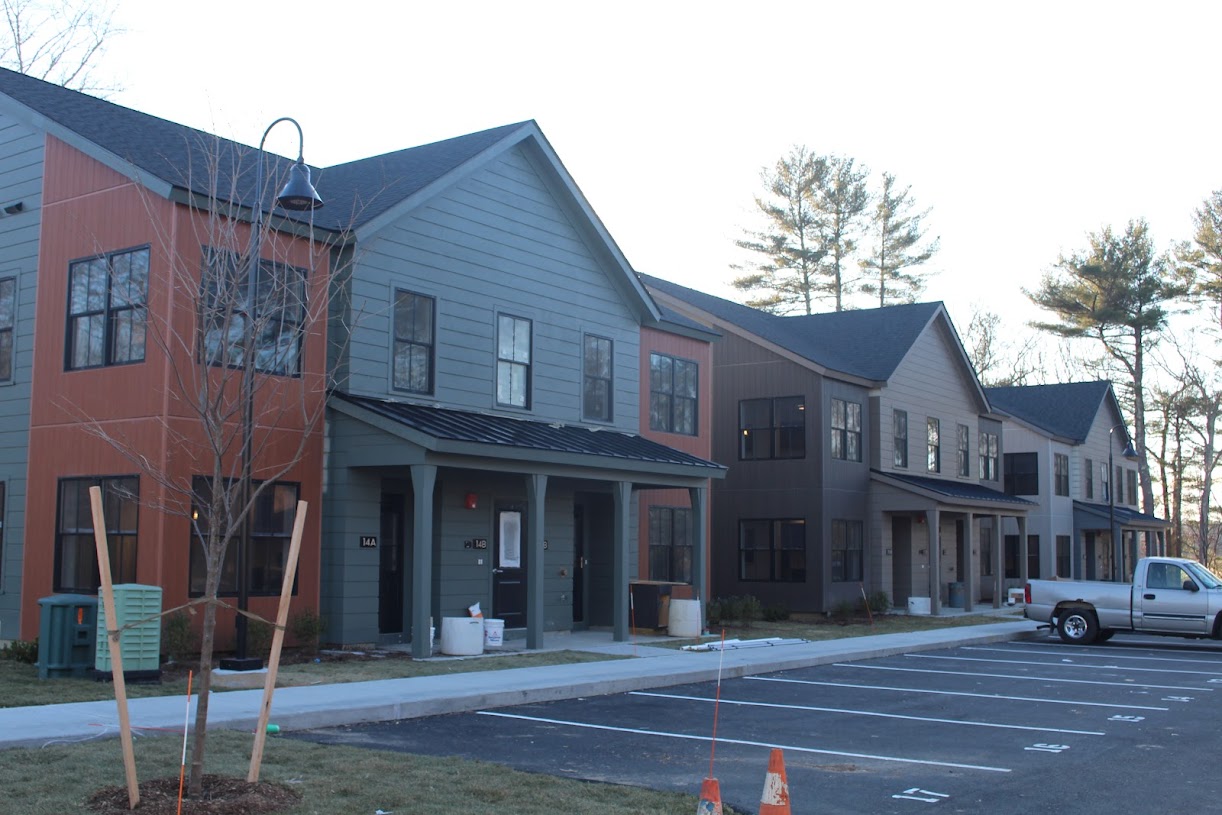Cooling Our Planet: New England’s Battle with Climate Change
June 10, 2024
Many are drawn to the natural beauty of New England in the summer, where the ocean’s cooling effect provides a respite from the heat. Cape Cod, Cape Ann, Martha’s Vineyard, Nantucket, Newport, and the coast of Maine are havens for those seeking refuge from the sweltering urban heat. Recently, however, the fabric of this climate is warping. Summers are increasingly hotter, and winters are unpredictably mild. These idyllic landscapes are under threat. With warming and stormier seas rising, we must understand the changes that are underway.
The excessive accumulation of greenhouse gases has disrupted the balance of heat entering and leaving our planet. This imbalance has led to a 1% increase in retained heat energy. Once, our skies were adorned with more than 50% white cumulus clouds, but today, their coverage has dwindled to less than 50%. The way rainwater is managed has also changed. Instead of infiltrating into the soil to keep the land moist and recharge aquifers, excess water now runs off the surface, floods and erodes landscapes, and is directly channeled into the sea. This only exacerbates the problem.
We aim to achieve net-zero carbon emissions to restore our planet’s health. By reducing emissions, we strive to reverse the hockey stick graph of rising carbon, much like giving a patient with a high temperature an ice bath. We struggle to slacken the rise in carbon and need to tackle the visible symptoms, like rashes, scars, and hot spots on the land. To restore planetary health, we must replace impervious surfaces with vegetation and soil. Plants can help by absorbing more carbon dioxide and building more soil with carbohydrates. These carbohydrates create spaces in the soil that can hold 7 inches of rainwater in just 4 inches of soil.
Green infrastructure, such as permeable pavements, rain gardens, rain barrels, cisterns, green roofs, and Miyawaki forests replacing city concrete lots also improve water quality. More water in the ground enables plants to continue growing and photosynthesizing, drawing down more carbon. Plants intentionally release water vapor when it is hot to evaporate and cool the microclimate. An hour before dawn, when the land is coolest, plants release water vapor that condenses to warm the microclimate with the morning dew. Meanwhile, restoring wetlands, salt marshes, and seagrasses, in addition to storing carbon, absorbs storm surges and acts as flood barriers.
Water slows in vegetation and soil, no longer puddles on the surface to be warmed by extreme summer temperatures. Heat energy from the land is flushed to the sea. Last summer, sea surface waters warmed by 2 degrees Fahrenheit in both Boston and Portland, Maine. Paradoxically, it was not a particularly hot summer, with average temperatures of 70 degrees. The sea’s face was not warmed in 2021, yet the average temperatures were 73.7 degrees Fahrenheit. The hot waters recorded last summer were a result of the highest rainfall totals since 1955.
Warmer weather, with climate change, warms the land that warms the rainfall that flows to the sea. On a hot day, when it rains, the temperature drops and the rain falling on the ocean is the temperature of the clouds, not the air. The air temperature cools when it rains, so rain on the water transfers little heat energy. We can cool the ocean by holding back and slowing the water running off the land.
The Gulf of Maine and the waters off Boston, Portsmouth, and Portland are bound by Cape Cod to the south and Nova Scotia to the north. It is a sea beside the Atlantic Ocean, separated by Browns Banks and Georges Banks, connected by a 60-mile-deep water channel. The water in the Gulf of Maine is less salty, at 34 parts per thousand, compared to the Atlantic Ocean, at 36 parts per thousand. The decrease in salinity is due to all the freshwater flowing from the land. Warm fresh water spreads out across the sea surface because it is much less dense. In winter, little water flows from rivers and the land. The Continental Shelf water, at 54 degrees Fahrenheit, rises to the surface to warm the region.
Climate change is a global problem. This is indicated by 420 parts per billion (ppb) tons of atmospheric carbon dioxide for a total of 800 billion tons of carbon worldwide. Great strides in restoring the climate would be achieved if the carbon dioxide burden was reduced to 350 ppb, to a worldwide volume of 700 billion tons of carbon dioxide. We look to vegetation, a diversity of plants, pollinators, and herbivores to reduce the atmosphere by 100 billion tons of carbon to restore the balance. Worldwide biomass amounts to 564 billion tons of carbon. Fortunately, whenever plants photosynthesize, they push a third of the carbohydrates as liquid carbon to feed soils. (Grasses contribute half of their manufactured carbon when not disturbed by quick-release fertilizers.) Worldwide soils, therefore, weigh in at 2,800 billion tons of carbon and bind carbon in humus for thousands of years.
We need to increase vegetation and soils by just 3% to win the battle with climate change, enough to draw down 100 billion tons of carbon.The land will hold more rainwater, flood less, and result in less stormwater erosion and choking sedimentation. More water will be available during dry periods. Vegetation will flourish with adequate moisture for longer periods of time to draw down more carbon dioxide and better moderate microclimates.
To live away from water, plants have the agency to release bacteria and fungi into the air. Water vapor nucleates around these organics to form mist and white cumulus clouds that reflect heat away from the ground. When the mist is created, the condensation causes a fall in pressure that acts as a biotic pump to draw moist air from the ocean to the plants. Plants reduce the energy gathering over oceans by releasing bacteria and fungi into the air. Conversely, when a stand of trees falls, with more energy, the ocean storm fury rises.
Smart climate change reduction actions start at home and in neighborhoods with greener, more natural, and more attractive landscapes. By restoring the balance of greenhouse gases, cumulus cloud cover, verdant green landscapes, and the hydrologic cycle, immediate benefits are provided locally to all in the region. With a little spadework, we can put the cool back into the planet, the green back into our landscapes, and enjoy nicer summer days by the sea once again.
Rob Moir is president and executive director of the Cambridge, Mass.-based Ocean River Institute, a nonprofit providing expertise, services, resources, and information unavailable on a localized level to support the efforts of environmental organizations.
Categories
Join the Discussion
View CommentsRecent Comments
Leave a Reply
Your support keeps our reporters on the environmental beat.
Reader support is at the core of our nonprofit news model. Together, we can keep the environment in the headlines.
We use cookies to improve your experience and deliver personalized content. View Cookie Settings




Right on